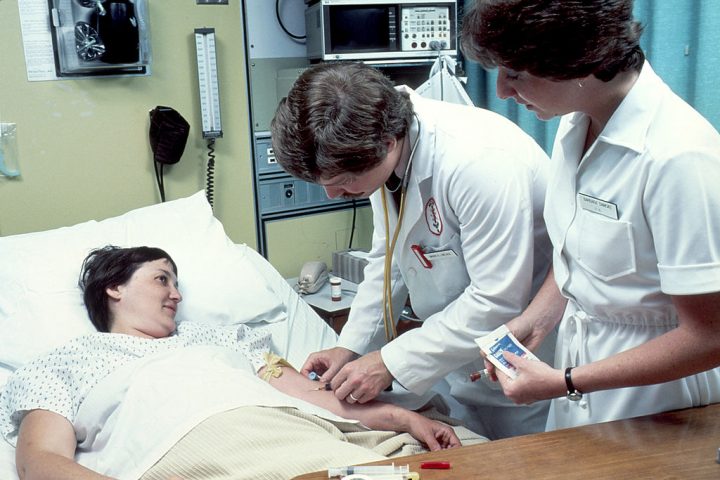Uninsured adults use emergency rooms at similar rates to those with insurance, new research finds. Scholars at Harvard, the University of Chicago and MIT present this finding to correct what they call a “common misperception that the uninsured use the ED [Emergency Department] more than the insured.”
In fact, they found that adults insured through Medicaid — public insurance for the poor — use the emergency room more than those without insurance. Looking at survey data from 2013, the researchers found that 12.2 percent of uninsured adults had visits to the emergency room compared with 13.7 percent of insured adults. Of those who had insurance, 29.3 percent of adults on Medicaid made emergency room visits. Fewer privately insured adults — 11.1 percent — went to the emergency room.
The researchers also looked at data to categorize these emergency room visits. They found that insured and uninsured adults used the emergency room in similar ways. About 38 percent of uninsured adults’ emergency room visits were triaged as immediate or urgent; about 44 percent of insured adults’ visits fit this category. The remainder of the visits were categorized as semiurgent, nonurgent or unknown.
Outside the emergency room, however, there are substantial differences in health care usage among insured and uninsured adults. Those without insurance use both inpatient and outpatient care at much lower rates. For example, the uninsured made about two outpatient visits per person per year compared to an average of six outpatient visits per year for their insured peers.
The researchers conclude, “Thus, while the uninsured are not overrepresented in the ED relative to the insured, they do use the ED for a much larger share of their medical care than the insured do.”
A question emerges from this research: What strategies might encourage uninsured adults to use other forms of care, such as primary care visits? A December 2017 study by scholars at the University of Colorado-Denver, Virginia Commonwealth University and the University of California at Irvine tests the efficacy of incentives.
The researchers enrolled 1,228 low-income, uninsured adults in the study. They completed baseline interviews and then offered roughly two-thirds either $25 or $50 if they saw a primary care provider within six months of the start of the trial. The remaining third, the $0 group, did not receive any incentive. The researchers also looked at a group of 415 low-income, uninsured adults with whom they made no contact as an untreated control group.
They checked the subjects’ health care claims for a year. This data includes emergency room visits, inpatient stays and outpatient services. The researchers found that all enrolled participants (including the $0 group) visited a primary care provider more often than the control group. The $25 and $50 incentive groups had a higher frequency of visits than the $0 group. Even after the six-month incentive period ended, individuals who had received incentives of $25 or $50 saw their primary care providers at significantly higher rates than the control group and $0 group.
Further, the researchers found that the incentive groups were linked with increased use of outpatient and specialty care services. They suggest that the incentives work not only to effect the explicit outcome targeted by the reward itself (primary care visits), but also to encourage other forms of health care use.
The researchers’ analysis of the subjects most likely to respond to the incentives might further explain these findings. They found that unhealthy participants were more likely to take the incentive and see a primary care provider than the healthy participants in the sample. The researchers suggest these participants might require more follow-up visits because of their health status.
Looking at emergency room use, the researchers found those who received incentives went to the emergency room less than those in the untreated control group; for the most part, however, these findings were not statistically significant.
While they did not find reductions in health care spending for the experimental groups, the researchers suggest that over time costs may even out. “Overall, we conclude that in a low-income previously uninsured sample with poor baseline health, small cash incentives are effective at encouraging a PCP [primary care provider] visit and perhaps effective at leading to a longer-term relationship with a PCP and fewer non-emergent ED visits, but may result in higher health care costs in the short-term.”


Expert Commentary